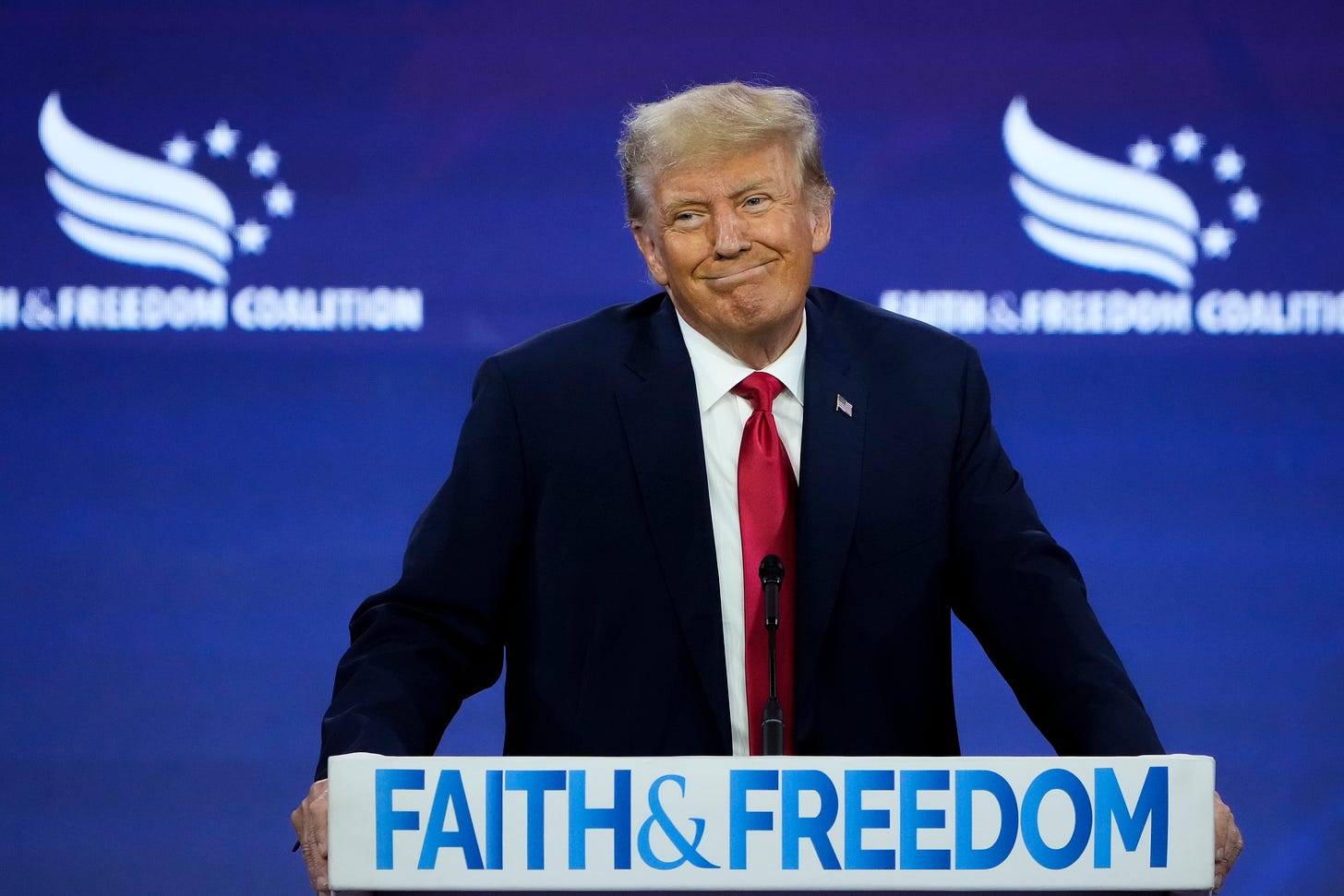The Evangelical Evolution
What a pair of administration policies tell us about the transformation of the religious right in the Trump era

Most of my subscribers know the outlines of my ideological history—how I started out on the center-right, took a job as an editor at First Things (an intellectual magazine for religious conservatives), quit that job in a huff, and then pivoted (around the time of the 2004 presidential election) to the moderate and largely secular center-left, which is where I’ve been ever since.
I like to think that background gives me insight into certain things about the populist-nationalist right that elude other analysts who’ve spent their entire adult lives in secular-liberal or progressive circles. Yet I’ve also struggled over the past decade to make sense of what’s happening. That’s partly because those years have presented the country with a paradox: Donald Trump is a thoroughly secular man whose MAGA movement includes lots of voters who rarely, if ever, attend church—and yet the old foot-soldiers of the religious right (white evangelical Protestants) also strongly support Trump and have achieved their greatest policy victories in history (especially the overturning of Roe v. Wade) thanks to his efforts.
So is the religious right in ascendance or in decline and dying out?
The answer I’ve been inclined to give in recent years—Both/And—amounts to an affirmation of the paradox rather than its resolution in one direction or the other. But how could that be? Here’s how I’ve tried to make sense of it: The religious right of a previous era really was trying to bring biblically based convictions into the political realm, with the aim of moving the latter into greater conformity with the former. Today, by contrast, “biblically based convictions” have been replaced, among many voters who would normally be defined as members of the religious right, by blatantly partisan convictions that are given a theological gloss.
Or to put the point in somewhat different terms: The religious right during the administration of George W. Bush had the ambition to inject biblically based moral ideals into American politics, whereas the religious right during the Trump era is inclined to take its cues from the political realm, with its distinctive contribution a theological justification and legitimization of what the Republican president and his team would be doing anyway.
That’s how I make sense of the seemingly bizarre situation in which we find ourselves, where the religious right seems at the same time both newly powerful and weaker than at any time since prior to the Reagan administration.
To clarify what I mean by all of this, I’m going to look at two areas of policy flux early on in Trump 2.0.
Anti-Roe But Not Anti-Abortion
Keep reading with a 7-day free trial
Subscribe to Notes from the Middleground to keep reading this post and get 7 days of free access to the full post archives.




